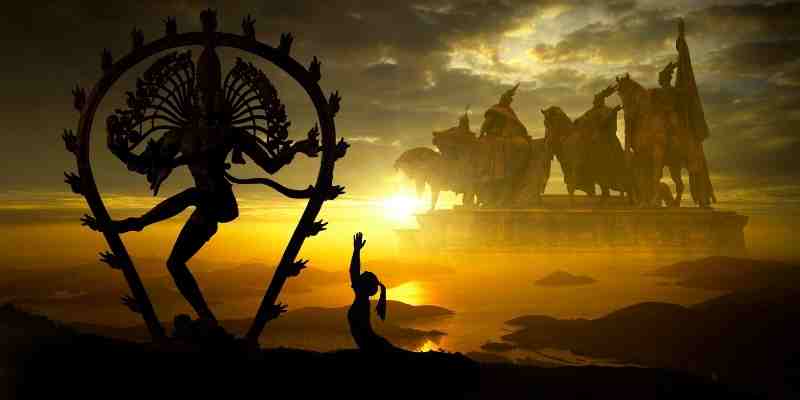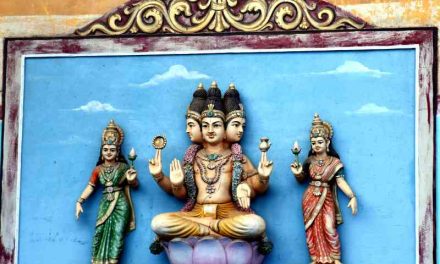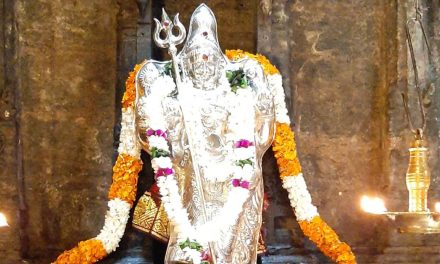In general, Hindu respondents adopted a different perspective, characterizing science and religion as interlocking domains. As was the case many Hindus said that their religion incorporates parts of science and that Hinduism long ago discovered principles that were subsequently enlightened by science – citing, for example, copper’s antibacterial qualities or turmeric’s medicinal advantages. Let us find out what are some similar beliefs between Hinduism and science?
However, when people considered science, religion was not necessarily the first thing that sprang to mind. In answer to questions regarding government involvement in scientific research, participants typically talked of the importance of scientific accomplishments to national pride and economic progress; religious differences were pushed to the side.
The insights gained from these qualitative interviews are intrinsically restricted since they are based on tiny convenience samples of people and are thus not typical of religious groups in their nation or worldwide. Rather than that, in-depth interviews reveal how people articulate their ideas in their own words and the links they make (or do not make) with science.
To avoid placing undue emphasis on the opinions of any particular participant, all interviews were classified according to a systematic approach. Wherever feasible throughout the remainder of this study, these results are compared to quantitative polls of representative samples of adults in worldwide publics to provide light on the degree to which specific perspectives are generally held by members of each faith community.
Which Hindu scriptures provide tales of the universe’s origins?
Hinduism provides many examples of how it explains the universe’s origins:
Brahma was seated on a lotus bloom that sprang from Lord Vishnu’s navel. Brahma divided the flower into three distinct parts: Heavens, Earth, and Sky.
Brahma divided himself in half out of loneliness, resulting in the creation of a male and a female, from which all creatures evolved.
Another narrative refers to life emerging from the shattering of a massive egg, referring to the life that gives birth to the cosmos.
The Rig Veda‘s ‘hymn of creation’ concludes that no one understands how the cosmos came to be and even casts doubt on Brahman’s knowledge.
Certain Hindu scriptures provide a more’scientific’ explanation based on the development of fundamental components from a single source.
These and other reports were written in or around what is now known as India several centuries ago. They are not meant to be regarded literally as a scientific reality, but rather as indications of the universe’s intricacy and infinity.
Numerous Hindus see religious teachings about the cosmos in the following ways:
Brahma is the creator deity who, together with Lord Vishnu and Lord Shiva, is responsible for the cosmos’ perpetual cycle. Each of these three facets of Brahman is distinct from the others.
Time is not a straight line but an unending cycle of universes creating, existing, and ‘dying,’ followed by recreation, existence, and death, with no beginning or conclusion. The belief in reincarnation reflects this.
Is Hinduism consistent with the Big Bang theory?
Numerous Hindus think that the Big Bang hypothesis does not refute their belief in creation. It is a scientific hypothesis that coexists with their religious convictions. It makes no claim to refute Brahman’s viewpoint or belief in a perpetual cycle of creation, preservation, and annihilation. There is no mention of the atman or any effort to lessen its everlasting character anywhere in the Big Bang hypothesis.
Philosophy and theology continue to discuss the link between religion and science. Religion and science are compatible to a certain degree. Is religion sometimes advantageous to science, or do religious ideas always obstruct scientific inquiry?
The multidisciplinary area of “science and religion,” sometimes referred to as “theology and science,” seeks to address these and other concerns. It examines historical and present relationships between various areas and offers philosophical analyses of their relationship.
The cognitive science of religion is a more recent development in the scientific study of religion. This is a diverse area, including contributors from developmental psychology, anthropology, philosophy, and cognitive psychology, among other disciplines.
It varies from previous scientific approaches to religion in that it assumes religion is not a simple cultural phenomenon but the consequence of common, early-developed, and universal human cognitive processes.
According to some scholars, religion is a consequence of cognitive processes that lack a religiously developed role. Religion develops as a result of our intuitive differentiation between minds and bodies: we can imagine minds continuing after the body dies (for example, by assigning wishes to a deceased family member), which makes believing in an afterlife and in disembodied spirits natural and spontaneous.
Another set of ideas views religion as a biological or cultural adaptive response that assists people in resolving cooperative difficulties. Humans act more cooperatively as a result of their belief in large, powerful gods capable of punishing them, which enabled human group sizes to grow beyond tiny hunter-gatherer societies. Thus, throughout the Neolithic, tribes with belief in large gods outcompeted those without such beliefs for resources, explaining the contemporary success of such gods’ belief.
One characteristic that links dharmic faiths is the priority placed on foundational writings throughout the Vedic era, about 1600–700 BCE. These include the Véda (Vedas), which contains hymns and instructions for conducting rituals, the Brhmaa, which contains supplementary liturgical writings, and the Upanishad, which contains philosophical treatises.
The Védas makes several references to various gods who personify and embody natural phenomena such as fire (Agni) and wind (Vayu). The following centuries saw the addition of other gods (for example, Gaea and Sati-Parvati in the fourth century CE). Ancient Vedic rites promoted an interest in a variety of disciplines, including astronomy, linguistics, and mathematics.
Astronomical expertise was essential to plan ceremonies and build sacrifice altars. Linguistics arose from a desire to systematize the grammatical norms of ancient Sanskrit, which was utilized in rituals. Additionally, large public offerings necessitated the building of complex altars, which presented mathematical challenges and hence aided in the advancement of geometry.
Additionally, ancient Vedic texts frequently used extremely large numbers to denote the ages of humanity and the Earth, necessitating the development of a system for parsimoniously representing numbers, which resulted in the development of a 10-base positional system and a symbolic representation for zero as a placeholder, which were later adopted by other mathematical traditions (Joseph 2000). Thus, ancient Indian dharma aided in the development of science.
Around the sixth–fifth centuries BCE, significant urbanization occurred in the northern section of the Indian subcontinent. Medicine (Ayurveda) developed into a systematic system of practice in this framework. Additionally, this era saw the emergence of a diverse spectrum of philosophical traditions, including Buddhism, Jainism, and Crvenka. The latter espoused a sort of philosophical naturalism in which he denied the existence of gods and karma.
On the Indian subcontinent, the connection between science and religion is complicated, partly due to the diversity of dharmic faiths and philosophical systems. For example, proponents of Crvka had a profound distrust of inferential beliefs and rejected Vedic revelation and supernaturalism in general, preferring direct observation as a source of knowledge.
These theories were comparable to philosophical naturalism in contemporary science, but this school of thought perished in the twelfth century. Natural theology also thrived throughout the pre-colonial era, most notably in the Advaita Vedanta, a drama that connects the ego, Atman, with ultimate reality, Brahman. Adi Sankara, an Advaita Vedantin philosopher, was an author who saw Brahman as the one reality, both the material and effective cause of the world.
He developed design and cosmology arguments by drawing comparisons between the world and artifacts: although we never witness non-intelligent beings creating a purposeful design in everyday life, the cosmos is intended for human existence, just as benches and pleasure gardens are designed for humans.
Given the complexity of the cosmos, which even the most brilliant artisan cannot fathom, how could it have been created by non-intelligent natural forces? What are some similar beliefs between Hinduism and science? I hope this sheds some light.





